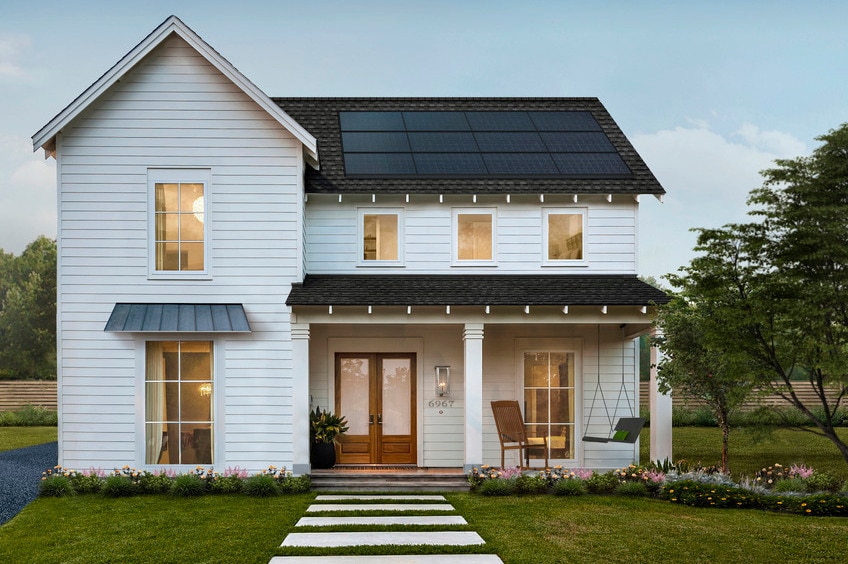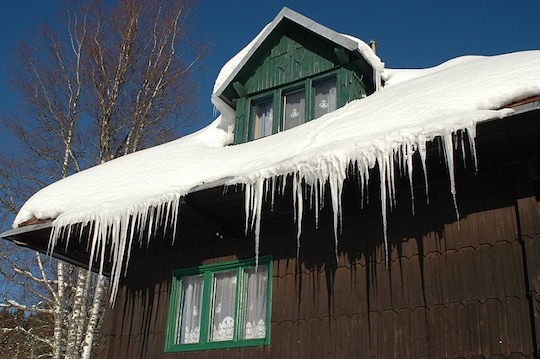
When it comes time to replace your home's roof, it could also be the perfect time to add solar power. Solar power isn't just good for the environment, it can also help you save on your electricity bill.*
Solar roofing comes in two main types of systems: traditional and integrated. Traditional solar roofing is what you probably picture when you think of solar panels: bulky racks mounted on top of your roof. This type of system works fine, but now there's a newer, better option available in the form of integrated solar.
Integrated solar roofing is convenient to install, provides better roof protection, and has greater curb appeal.
What Is Integrated Solar Roofing?
Integrated solar roofing consists of solar panels that integrate with the roofing system. A traditional solar panel system installs using a rack system that is separate from the roof. GAF Energy's system is direct-to-deck, meaning it is part of the roofing system.
The solar panels in this type of system are just as efficient as those on a traditional solar panel installation. GAF Energy uses highly efficient photovoltaic panels in its integrated solar systems. The system can help you lower your electricity costs, and in time, the electricity cost savings can pay for the system and your new roof.*
Benefits of Integrated Solar Roofing
There are a number of qualities that make integrated solar roofing a better choice than traditional solar roofing.
Instalación práctica
Since the solar panels are installed at the same time as your new roof, installation is efficiently handled by the same company. You don't have to worry about hiring one contractor for your roof and one for the solar system. Also, the two systems are designed to fit perfectly together, meaning there's less chance of gaps or leaks.
Mejor protección
Traditional solar systems have racking systems that are installed by putting bolts through the roof. These penetrations in your roof can cause leaks if they aren't sealed properly. An integrated system minimizes such exposures, which means less of a chance of roof damage and leaks.
Animals and birds like to build nests in solar racking systems, as well. The lower profile of an integrated system prohibits animals from doing this. In addition, the flashing system around the panels helps to protect your roof deck from water and wind damage.
Aesthetic Appeal
Solar panels that lay directly on your roof are typically considered more aesthetically appealing than a rack system. Integrated panels follow the roof line and appear to be part of the roof system. There's no unsightly metal bars, bolts, or racks to be seen. With all-black panels that have a low profile, the system doesn't stand out when seen from the ground, preserving your home's curb appeal.
One Warranty for Your Roof and Solar System
When using GAF Energy's integrated system, one integrated warranty is available to you. Ask your GAF Master Elite®** roofer for more details.
A New Approach to Solar Roofing
Integrated solar systems are ushering in a new era of solar roofing, boosting homeowner benefits without lessening the environmental wins of solar. If your roof needs a repair or replacement, it may be a great opportunity to help save on electricity costs while also helping the planet. For more information about the GAF Energy integrated solar roofing system, visit the GAF Energy website.
*Savings are not guaranteed.
**Contractors enrolled in GAF certification programs are not employees or agents of GAF, and GAF does not control or otherwise supervise these independent businesses. Los contratistas pueden recibir beneficios, como puntos y descuentos de recompensa por lealtad en herramientas de comercialización de GAF por participar en el programa y ofrecer a GAF garantías mejoradas, que requieren el uso de una cantidad mínima de productos de GAF.



